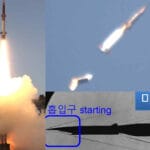Amid escalating global drone threats and the proliferation of low-cost unmanned aerial systems (UAS), Australian defense technology company DroneShield has announced a significant expansion of its U.S.-based artificial intelligence (AI) hub. The move aims to accelerate development of advanced counter-drone and electronic warfare (EW) solutions tailored for U.S. military and homeland security customers.
Strategic Expansion to Address Evolving C-UAS Demands
DroneShield’s decision to expand its AI center in Northern Virginia reflects the increasing demand for sophisticated counter-unmanned aerial systems (C-UAS) technologies in the United States. The facility will serve as a key node for research and development of AI/ML algorithms that underpin DroneShield’s sensor fusion, threat detection, and autonomous response capabilities.
The expansion includes hiring additional engineering staff with expertise in machine learning, signal processing, and embedded systems. According to DroneShield CEO Oleg Vornik, the initiative is designed to “rapidly iterate on-site with end users,” particularly within the Department of Defense (DoD), Department of Homeland Security (DHS), and law enforcement sectors.
“The U.S. remains our largest market,” Vornik stated in a recent press release. “Our expanded presence allows us to better support operational deployments while accelerating innovation cycles for emerging threats.”
AI at the Core of Modern Counter-Drone Systems
Modern C-UAS operations increasingly rely on artificial intelligence for real-time detection, classification, tracking, and mitigation of drones across complex environments. DroneShield integrates proprietary AI/ML models into its flagship products such as:
- DroneSentry-C2: A command-and-control platform that fuses data from multiple sensors including radar, RF detectors, EO/IR cameras, and acoustic arrays.
- DroneGun Mk4: A man-portable electronic countermeasure device capable of disrupting drone RF links via directional jamming.
- RFAI Engine: An RF-based artificial intelligence engine that classifies drone signals using deep learning techniques trained on an extensive signal library.
The expanded U.S. hub will focus on refining these algorithms using real-world datasets collected from domestic testing ranges and operational deployments—critical for adapting to novel drone waveforms or autonomous swarm tactics.
U.S. Market Drives Growth Amid Global Demand Surge
The United States continues to be a major growth engine for DroneShield’s business. In FY2023 alone, the company reported over AUD $55 million in revenue—more than double its previous year—with a substantial portion driven by U.S.-based contracts across military services and federal agencies.
This includes recent awards such as:
- A $33 million DoD contract in August 2023 for portable counter-drone systems.
- A multi-million-dollar order from a classified federal agency delivered in Q1 2024.
- An ongoing collaboration with the U.S. Army’s RCCTO (Rapid Capabilities and Critical Technologies Office).
The expanded AI hub is expected to support these programs while enabling faster adaptation cycles as adversaries evolve their tactics—particularly through commercial off-the-shelf drones modified with encrypted comms or autonomous navigation modes that evade traditional detection methods.
C-UAS Challenges Grow Across Battlefield & Homeland Sectors
The urgency behind this expansion is rooted in operational realities observed globally—from Ukraine’s FPV drone swarms to cartel-operated UAVs along the U.S.-Mexico border. These threats span tactical battlefields as well as critical infrastructure protection domains such as airports, prisons, energy facilities, and public events.
A key challenge lies in distinguishing hostile drones from benign ones operating in congested airspaces—a task where traditional rules-based systems often fail due to spoofing or signal obfuscation techniques employed by threat actors.
This is where DroneShield’s AI-driven approach offers an edge: leveraging multi-modal sensor fusion combined with neural networks trained on adversarial tactics allows more accurate identification with lower false positives—essential for both kinetic interdiction decisions and legal compliance frameworks within civilian jurisdictions.
Sovereign Tech Stack & Export Controls Compliance
An important differentiator for DroneShield is its emphasis on sovereign technology stacks free from Chinese components—a factor increasingly scrutinized under NDAA Section 889 compliance rules affecting federal procurement eligibility in the U.S.
The company has invested heavily in developing indigenous hardware designs—including RF front ends—and software stacks built entirely within Five Eyes jurisdictions (Australia/U.K./U.S.). This not only enhances trust among defense clients but also facilitates ITAR-free exportability across allied markets like NATO members or Indo-Pacific partners such as Japan or India.
Outlook: Accelerating Toward Autonomous C-UAS Ecosystems
The long-term vision behind expanding the Northern Virginia hub aligns with broader trends toward autonomous layered C-UAS architectures integrating kinetic interceptors (e.g., lasers or projectiles), non-kinetic EW effects (jamming/spoofing), cyber payloads—and ultimately automated decision loops governed by trusted AI agents operating under human-on-the-loop doctrines.
This evolution will require robust validation pipelines for explainable AI models capable of operating under degraded conditions—including GPS denial or contested RF environments—while maintaining high reliability thresholds demanded by military users.
Conclusion
As adversaries continue exploiting commercial drone tech at scale—from asymmetric warfare zones to urban homeland targets—the need for agile C-UAS solutions powered by adaptive AI becomes paramount. DroneShield’s strategic investment into its U.S.-based R&D capacity positions it well not only commercially but also technologically amid this rapidly shifting threat landscape.








